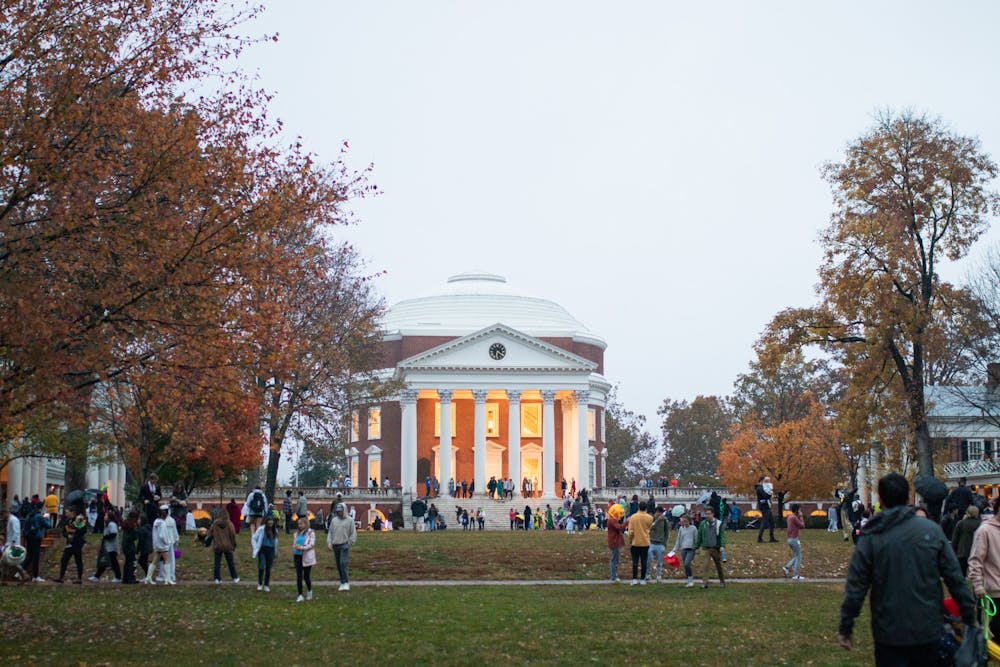The University has carved out time for Halloween celebration with its annual Trick-or-Treating on the Lawn event, which will be held Oct. 31 from 5 to 7 p.m. Originally, this year’s event was scheduled from 6 to 8 p.m. but was moved earlier due to lighting and safety concerns.
Trick-or-Treating on the Lawn is an annual tradition in which Lawn, Range and Pavilion residents, as well as a variety of student groups, station themselves across the Lawn’s 54 rooms and hand out candy to trick-or-treaters, often local families. The event is attended by members of the University and Charlottesville area communities. This is the second celebration of the event since the COVID-19 pandemic prompted its cancellation in 2020 and 2021.
Cyrena Matingou, senior resident of the Lawn and fourth-year College student, is responsible for coordinating which organizations will participate in Trick-or-Treating on the Lawn, as well as working with the University Police Department and Housing and Residence Life to ensure safety.
The earlier start time means there will be more light during the earlier half of the event, and families can be home earlier. The change was made to address concerns about safety — according to the University’s 2022 Fire Safety and Security Report, last year saw a rise in crimes including murder, aggravated assault and motor vehicle theft since 2021, following a general rise in crime in Charlottesville.
Prior to the COVID-19 pandemic, the event had taken place from 4 to 6 p.m. — the 5 to 7 p.m. time period addresses safety concerns while also making the event more accessible to students and community members alike.
“A lot of students still have classes going on at 4 p.m., so the 5 p.m. time makes it more accessible for people who are actually handing out candy,” Matingou said. “Also a lot of parents don’t get off work until 5 p.m., so they can bring their kids to enjoy the whole event too.”
The event is co-sponsored by a range of University organizations, such as Housing and Residence Life, Facilities Management and the University Police Department. Co-sponsorship entails providing resources and advertising for events.
In the days before Trick-or-Treating on the Lawn, the City of Charlottesville will host its annual Downtown Safe Halloween Festival at Ting Pavilion from 2 to 4:30 p.m. Oct. 28. The family-friendly event will include activities such as a costume contest and magic show and will conclude with trick-or-treating on the Downtown Mall from 4 to 4:30 p.m..
Trick-or-Treating on the Lawn first began in 1987, when Lawn and Range residents opened their doors to the University community and paid for their own candy to give to attendees. In the decades since, the event has not only become a popular attraction for many in the Charlottesville area, but also gained support from the University itself.
“Students are inviting the community members to the spaces that we live and learn at,” Matingou said. “[Students want] to give candy to kids and be able to create a safe environment where they can retreat with their families and have awesome memories as they’re growing up.”
Trick-or-treating on the Lawn is open to all and no registration is required.







